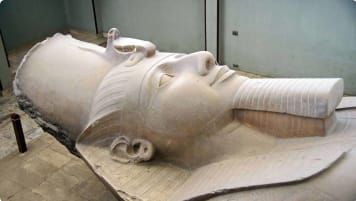Ancient Thebes, Egypt
Thebes, the ancient Egyptian city know within Luxor, located some 800km from the Mediterranean sea. Odyssey offers small group tours to Egypt to explore the history of the Nile and the ancient Egyptians. An Antipodean travel company serving World Travellers since 1983 with small group educational tours for senior couples and mature solo travellers.
22 Dec 23 · 10 mins read
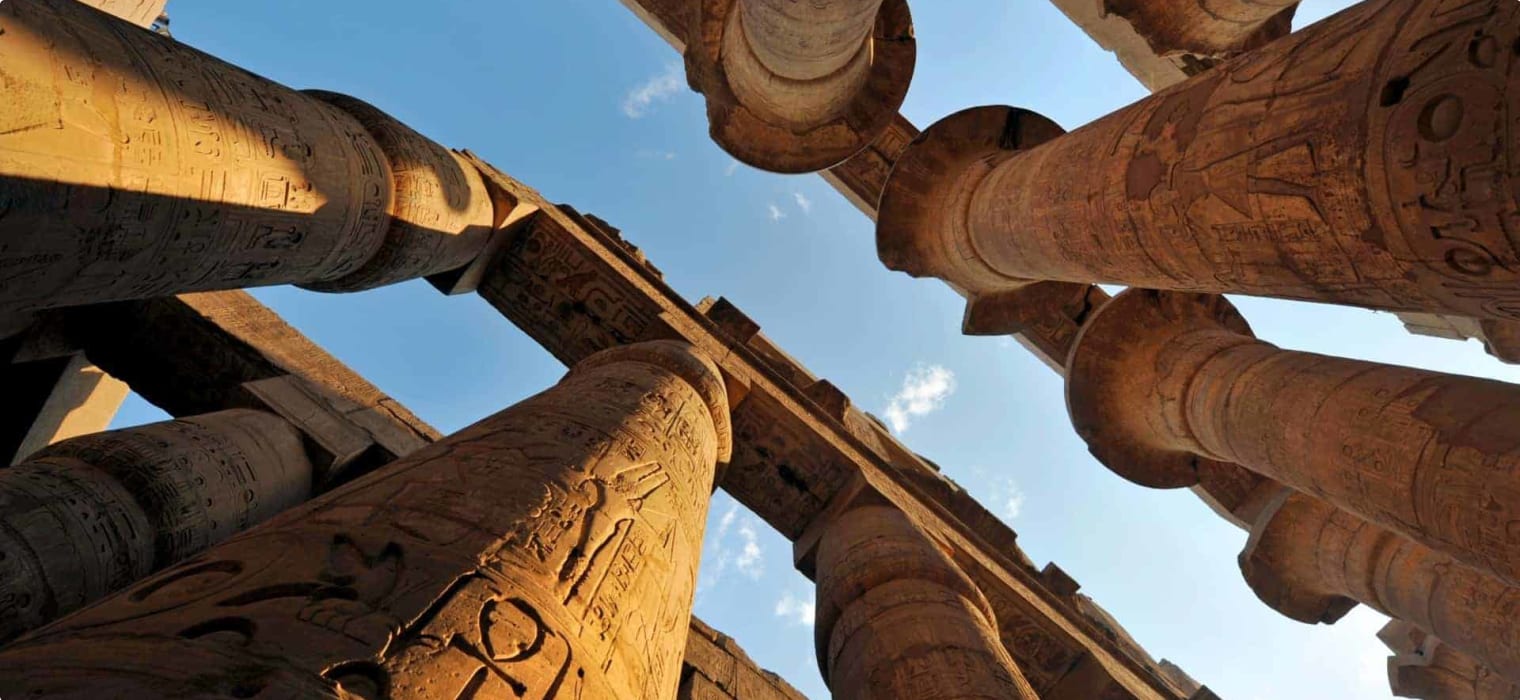
Thebes, Egypt
The majestic ancient city of Thebes stood historically as the capital of Egypt during parts of the Middle Kingdom (2040 to 1750 BCE) and New Kingdom (1570-1069) BCE, from the 11th to the 18th dynasties. Laying on either side of the Nile River, about 800 kilometres (500 miles) south of the Mediterranean, it consisted of a main city on the east bank and a vast necropolis on the west filled with royal tombs and mortuary temples that still stand today.
It was known to the Egyptians as ‘Waset’, meaning ‘City of the Sceptre’, but is commonly referred to today as its Greek name Thebes, meaning ‘the temple’. Indeed, the city was a hub for religious activities, home to grand temples and monuments, the ruins of which still stand today in present day Luxor.
Odyssey Traveller conducts a tour of Luxor as part of our 18-day Small Group History & Cultural Tour of Egypt, visiting several key archaeological sites, including the Temple of Luxor, the Valley of the Kings, Karnak Temple, the Temple of Queen Hatshepsut, and the Colossi of Memnon. This article provides a history of Thebes, as well as an overview of its glorious monuments and grand temples located at present day Luxor as background reading for your tour. It is written as part of our series on lost ancient cities, with information drawn from Philip Matyszak’s Lost Cities of the Ancient World. Read on for more information!

Early History during Egypt’s Early to Middle Kingdoms
The settlement of Thebes was originally founded around 3500 BCE, when Egypt was not yet ruled by a single king. It served then as the eponymous capital of Waset. And was among the very first Egyptian cities. It lay on the alluvial plain created by silt deposited on a sweeping bend of the Nile and was probably formed by the coalescence of smaller villages. Sited some 800km (500 miles) south of the Nile delta, the area was naturally rich farmland. This location also made the new town a natural site for trade between the tribal clans of the south and more settled north.
The first written records of the city are from hieroglyphs dated to around 2600 BCE. By then the rulers of Thebes had expanded their domain considerably. One of the first on record, and from which later rulers descended, was Intef I, who ruled Thebes late in the 22nd century BCE. Intef was not an Egyptian pharaoh in the traditional later sense but appears to have been lord of a considerable tract of land, from Aswan in the far south to the city of Coptos, some 43 km (26 miles) north of Thebes.
By then Thebes had risen in importance and was known for its wealth and grandeur. Correspondingly, the status of the city’s principal deity, the god Amun, also rose. Indeed, devotees elevated the importance of this once relatively local god to merge him with the sun god Ra, and eventually most of Egypt came to acknowledge him as the king of gods. This gave even further importance to Thebes as the centre of Amun’s workshop, and the temple sites on the west bank began to expand to assume a national role. Most of the earliest surviving buildings today stem from this period – the 11th dynasty (2081-1939 BCE).
Thebes During Egypt’s Second Intermediate Period
Following the fall of the Middle Kingdom and the start of the Second Intermediate Period, foreign invaders called the Hyksos immigrated into Egypt. With superior military technology, the northern part of the country gradually fell under their sway. When the Hyksos took the capital of Egypt, Memphis, the rulers of the 13th Dynasty fled south to Thebes, making it the capital.
Thebes would then play a crucial role in resisting the Hyskos and eventually reunifying Egypt, The Theban princes stood firmly as the Hyksos advanced from the Delta southwards to Middle Egypt, leading to an agreement for a peaceful concurrent rule between them. This status quo was maintained until Hyksos ruler Apophis insulted Seqenenre Tao of Thebes, leading to the armies of Thebes marching on the Hyksos-ruled lands. After both Tao and his son Kamose died during the campaign, Kamose’s brother Ahmose I took over, going on to capture Avaris, the Hyskos capital. From here, the Hyksos were driven completely out of Egypt and the Levant, with Ahmose I reclaiming the lands formerly ruled by them.
Thebes was celebrated as the city which had liberated Egypt, and by this point, it was incontestably the main city of the country. Indeed, by them, with a population of some 600,000 people, it may have become the largest city in the world.
Thebes at its Greatest During Egypt’s New Kingdom
Thebes’s trade expanded during Egypt’s New Kingdom era, flowing not only down the Nile, but also across the desert. Caravans came with goods from India and Punt (thought to be the coastal area of modern Ethiopia). Later, a port was to be the built at Myos Hormos (modern al-Quoseir) on the Red Sea to handle this traffic, which the geographer Strabo put at well over a hundred ships a day. At this time trade also began with a people to the north called the Hellenes, who were to base much of their newly evolving culture upon the Egyptian model. The trade led to prosperity, reaching especially extreme highs during the reign of Amenhotep III (c. 1386-1349), which saw the temples overflow with extravagant materials.
Amenhotep’s son Akhenaten, however, chose to dramatically separate his reign (1353-1336), from his predecessors. Attempting to instigate a religious revolution, he rejected the polytheistic religious beliefs of the time in favour of worshiping the sun god Aton as the one true god. This new monotheistic religion meant disavowing the worship of Amun and its prominent cult centred in Thebes. As such, due to Thebes’ association with the old gods and the influence of its traditional priesthood, Akhenaten moved the capital away to his custom-built city of Akhetaten.
The religious revolution ultimately failed, however, with Akhenaten’s son Tutankhamun (1333-1323 BCE), returning the capital to Thebes upon taking the throne. The reconstruction of the city that followed brought it to its highest level of elegance and prestige. The 19th Dynasty rulers Seti I (1290-1279 BCE) and Ramses II (1279-1213 BCE), in particular, erected many temples on a grand and splendid scale and worked to enlarge the city as much as they could.
It was during the reign of Ramses II that Egypt reached the height of its power. Thebes itself could be said to have peaked somewhat earlier though, as Ramesses moved his capital north to a purpose-built city in the Nile delta. The new location made it easier for Ramesses to fight his wars in the Med lands. Nevertheless, Ramesses’ patronage of Thebes continued and the city continued to thrive as a religious centre and place of pilgrimage. Its grandeur continued for many centuries, with Homer in the 8th century BCE referring to it in the Iliad as ‘Egyptian Thebes were the piled ingots gleam’.
The Downfall of Thebes
Thebes’s glory could not last forever. The very location in the south which had protected the city from Hyksos made Thebes vulnerable to the Kushites, who attacked from the opposite direction (modern Sudan). The Kushite conquerors became the 25th Dynasty of Egypt (747-656 BCE), the first time the whole country had come under foreign rule.
The civilisations to the north took note, and in 665 BCE, Ashurbanipal of Assyria relaunched a devastating raid from which Thebes never really recovered. Later, Ashurbanipal would boast that he had stripped the ‘wealth of the palaces, cloths, linen, previous stones’ and two obelisks of electrum weighing 2,500 talents (approximately a whopping 62,500 kg).
Further conquests were to come. First the Persians attacked and added Egypt to their empire in 525 BCE, and then Alexander the Great defeated the Persians and Egypt came under the rule of Ptolemaic (Greek) rulers, the last of whom was Cleopatra. Memory of past glories made Thebes a nationalistic rival to the Greek capital of Egypt in Alexandria, and several rebellions against Ptolemaic rule were centred around the city. The Ptolemies responded by giving more power and autonomy to the priestly castes in Thebes, but the city remained in decline.
By the time the Romans defeated Cleopatra and made Egypt a Roman province in 30 BCE, mighty Thebes was barely a shadow of its former self, with a population that lived partly by farming and partly by entertaining Roman tourists who came to see the famed ruins. One reported: ‘the city has been abandoned and there are several temples, but most of these, too, were mutilated… and now Thebes is only a collection of villages.’ (Strabo, Geography, 17.1.46)
Thebes Today: ‘The World’s Largest Museum’
Today, Thebes has been revived, party on the back of a thriving tourist trade, under the name of Luxor. The site contains so many glorious monuments and great temples that it has been frequently fittingly described as the world’s largest museum. Key attractions include the temple complex at Karnak, Luxor Temple, the Colossi of Memnon, the great temples of the Ramesseum and of Queen Hatshepsut at Deir el-Bahari, and the famed tombs of the Valley of the Kings and the Valley of the Queens, As with many other cities, the area is now a UNESCO World Heritage Site.
The monuments are located on either side of the Nile. Historically sitting on the river’s east side was Thebes proper, with many important temples, including the legendry complex at Karnak. Built and continuously enlarged between 2055 BCE and around 100CE, this served as the principal religious site of the New Kingdom. Today it remains one of the largest religious complexes ever built worldwide, measuring 200 acres (approximately 81 hectares).
Its massive assemblage of structures, columns, and statures honours the creator god Amun, his wife Mut the mother goddess of justice, and their son Khonsu god of the moon, as well as a host of other gods, most famously Hathor the goddess of love, beauty, and joy; Sobek the crocodile god of the Nile; and Horus the sky falcon god.
Connected to Karnak Temple by the grand 1.3km-long (1.9 mile-long) Avenue of Sphinxes is Luxor Temple. The temple, with its soaring columns, grand statues, pylon (gateway), open courtyard, and series of halls and chambers, is one of the most well-preserved temples from ancient Egypt. The construction of the temple dates back to the reigns of Amenhotep III in the 14th century BCE, but later rulers, such as Tutankhamun, Horemheb, Ramses II, and even Alexander the Great expanded upon it over the years.

Originally the temple was dedicated to Amum in his form as a fertility god and was primarily used during the annual festival of Opet, in which the pharaoh renewed his divine power. Today, it is still a place of worship, with the Abu el-Haggag Mosque, built in the 13th century over the remains of the ancient temple, still operational.
On the Nile’s west bank, the Thebans created an extensive necropolis – or ‘City of the Dead’ – host to a number of ancient tombs, cemeteries, and funerary temples, which served to both commemorate the lives of the royal and highborn and prepare them for the afterlife. Today the necropolis is rich in archaeological sites, with several key locations each with their own significance.
One of the main attractions here is the Valley of the Kings, the burial place of many of the royalty and high-ranking officials during much of the New Kingdom era (approximately 1550-1070 BCE). The dead were entombed in elaborate underground burial chambers, adorned with intricate paintings and hieroglyphs, and filled with all the treasures and possessions they could desire in the afterlife. There are more than 60 tombs all up in the valley, some of the best known including those of Tutankhamun, Ramses II, and Seti I.

Another significant site in the necropolis is the Valley of the Queens, housing some 90 known tombs of queens, princes, and other notables from the New Kingdom. One of the most famous tombs here is the tomb of Queen Nefertari, the principal wife of Ramses II, renowned for its splendid beauty and exquisite paintings.
Other key sites in the necropolis include the Colossi of Memnon (two massive stone statues of Pharaoh Amenhotep III, each measuring 66 feet and weighing 1,000 tonnes), the Ramesseum (the Temple of Ramses II at Madinat Habu) and the Temple of Hatshepsut (a beautiful monument, dedicated to Queen Hatshepsut, that rises out of the desert plain in a series of terraces to merge with the sheet limestone cliffs that surround it.
Tour of Luxor (Modern-Day Thebes)
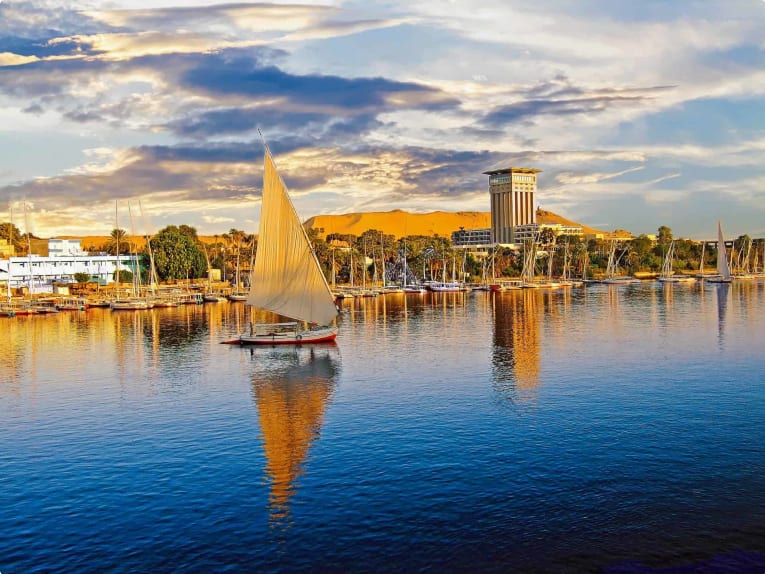
Odyssey Traveller conducts a tour of Luxor as part of our 18-day Small Group History & Cultural Tour of Egypt. We spend three nights in Luxor, exploring the Temple of Luxor, the Valley of the Kings, Karnak Temple, the Temple of Queen Hatshepsut, the Colossi of Memnon, Luxor Museum, and Souk Market, before embarking on a cruise down the spectacular Nile.
Other highlights of our Egypt tour include:
- The Oasis of Wadi El Seboua, Alexandria, and El Alamein.
- The Red Pyramid, the Great Pyramid, the Valley Temple, and the Great Sphinx.
- The Temple of Philae, the 3000 year old Abu Simbel, and Lake Nasser.
Other tour operators or tour companies may simply survey the archaeological sites and monuments to the Pharaohs and the Giza pyramids. Our Egypt tours, however, also visits contemporary feats such as the Aswan Dam and lets us witness landmarks of the contemporary Egyptian experience, such as Tahrir Square. These sites show that Egypt’s role as the pivot of civilisation is far from ended.
Odyssey Traveller has been serving global travellers since 1983 with educational tours of the history, culture, and architecture of our destinations designed for mature and senior travellers. We specialise in offering small group tours partnering with a local tour guide at each destination to provide a relaxed and comfortable pace and atmosphere that sets us apart from larger tour groups. Tours consist of small groups of between 6 and 12 people and are cost inclusive of all entrances, tipping and majority of meals. For more information, click here, and head to this page to make a booking.
Articles published by Odyssey Traveller about Egypt.
The following articles may also be of interest:
- From Cairo to NAC: Egypt builds a new capital city
- Discover Egypt with 10 great books
- Egyptian Linen Treasures
- Top 20 World Heritage Sites You Must Visit
- The Rosetta Stone: Decoding the Secrets of Ancient Egypt
- Julius Caesar and Cleopatra’s Relationship
Links to External Sites About Egypt.
Learn more about Egypt before you travel with these articles and links to external sites.
- Egypt the country. A country profile from Odyssey.
- More small group tours to Africa
- Mesopotamia – HISTORY
- Ancient Near East and Egyptian | Penn History of Art
Related Tours
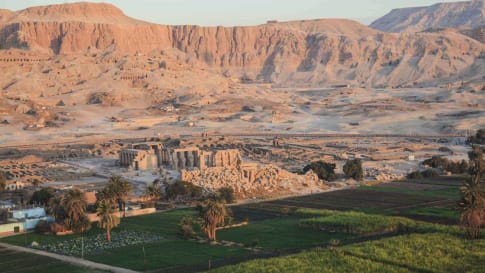
18 days
Nov, JanEgypt tour: escorted small group history & cultural tour of Egypt
Visiting Egypt
Our small group program for senior and mature couples and solo travelers takes us to contemporary feats such as the Aswan Dam and also to current crucibles of the Egyptian experience such as Tahrir Square. Proof, were it needed, that Egypt’s role as the pivot of civilisation is far from ended. There is the opportunity to visit our Morocco, Jordan or Iran tours before embarking on this tour of Egypt.
From A$12,950 AUD
View Tour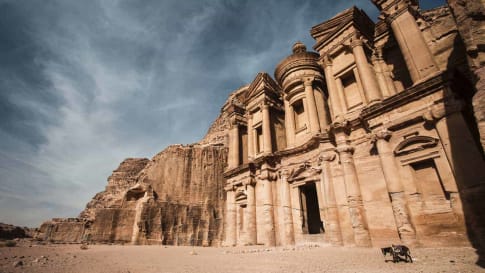
9 days
Jan, OctAncient History of Jordan | Escorted Small Group Tour
Visiting Jordan
Explore Jordan, visiting its capital city, Amman Jordan, the ancient Desert Castles, Petra and the Dead Sea on a small group package tour for mature and senior travellers travelling as a couple or Solo.
From A$6,750 AUD
View Tour
20 days
Sep, AprCrete Small Group Tour: The Minoans
Visiting Greece
Crete rich in UNESCO World heritage sites this small group escorted tour provides a travel experience for guests with experienced local guides to remember. For senior couples or single travellers who seek to travel with other like minded people to destinations rich in ancient history then this in one of many small group journeys to be enjoyed.
From A$13,500 AUD
View Tour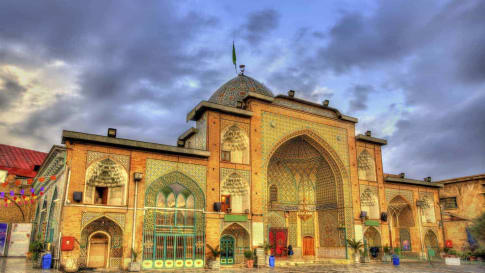
17 days
Sep, Nov, AprIran Culture and History Escorted Small Group Tour for seniors
Visiting Iran
Unlike its neighbours to the west and northwest, Iran had not adopted Christianity and it was the explosive spread of Islam and its ready adoption, without the Arabic language or customs, which helped unite the culture and greatly enrich Persian heritage. This small group tour program includes the great cities of Iran, historic sites, mosques, gardens, bazaars and teahouses for couples and solo travellers.
From A$11,825 AUD
View Tour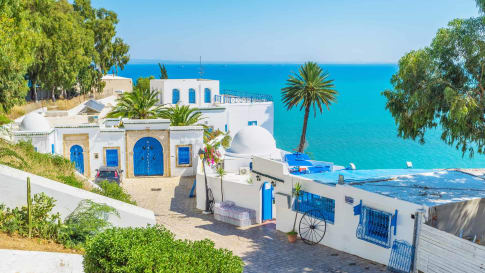
14 days
Apr, Sep, MarTour of Tunisia
Visiting Tunisia
Join Odyssey Traveller on this small group tour of Tunisia in North Africa for couples and solo travellers, where Carthaginian ruins sit side by side with Roman monuments, grand Islamic mosques, Arabic souks and medina, and honeycomb-like Berber cave dwellings and hilltop villages.
From A$10,995 AUD
View Tour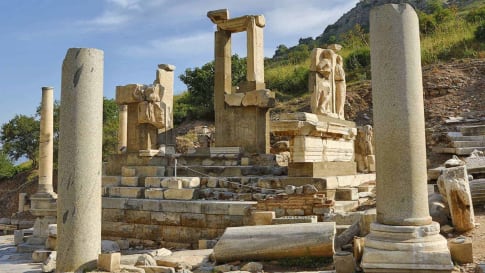
21 days
Apr, AugSmall group tour of Ancient Turkey
Visiting Turkey
As a travel company we seek to keep guests off the beaten path. Trips that are remembered for authentic experiences. Our small group journeys in Turkey are fully escorted by an experienced local guide and an Odyssey guide to give this type of experience whether at one of the many UNESCO World heritage sites explored or local bazaars. It is always about the adventure and memories that we will create.
From A$17,295 AUD
View Tour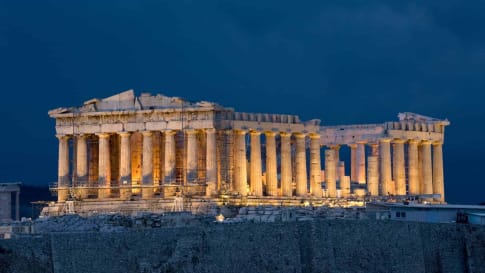
days
JanUncovering Ancient Greece | Summer School course
Visiting Tasmania
The Glory of Greece course examines the history of the Ancient Greeks from Mycenaean, Minoan and Homeric times until the commencement of the Peloponnesian War in 431BC. We discover the development of a classical, ancient people and culture.
